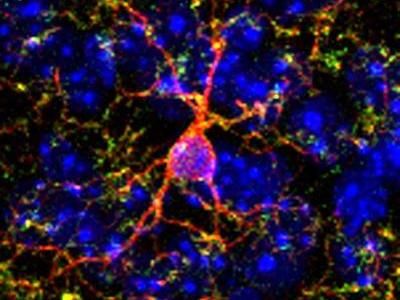Brain changes are associated with casual marijuana use
Preliminary study suggests effects of drug even in those who are not addicted
Advertisement
The size and shape of two brain regions involved in emotion and motivation may differ in young adults who smoke marijuana at least once a week, according to a study published in The Journal of Neuroscience. The findings suggest that recreational marijuana use may lead to previously unidentified brain changes, and highlight the importance of research aimed at understanding the long-term effects of low to moderate marijuana use on the brain.
Marijuana is the most commonly used illicit drug in the United States, with an estimated 18.9 million people reporting recent use, according to the most current analysis of the National Survey on Drug Use and Mental Health. Marijuana use is often associated with motivation, attention, learning, and memory impairments. Previous studies exposing animals to tetrahydrocannabinol (THC) — the main psychoactive component of marijuana — show that repeated exposure to the drug causes structural changes in brain regions involved with these functions. However, less is known about how low to moderate marijuana use affects brain structure in people, particularly in teens and young adults.
In the current study, Jodi Gilman, PhD, Anne Blood, PhD, and Hans Breiter, MD, of Northwestern University and Massachusetts General Hospital/Harvard Medical School used magnetic resonance imaging (MRI) to compare the brains of 18- to 25-year olds who reported smoking marijuana at least once per week with those with little to no history of marijuana use. Although psychiatric evaluations ruled out the possibility that the marijuana users were dependent on the drug, imaging data revealed they had significant brain differences. The nucleus accumbens — a brain region known to be involved in reward processing — was larger and altered in its shape and structure in the marijuana users compared to non-users.
"This study suggests that even light to moderate recreational marijuana use can cause changes in brain anatomy," said Carl Lupica, PhD, who studies drug addiction at the National Institute on Drug Abuse, and was not involved with this study. "These observations are particularly interesting because previous studies have focused primarily on the brains of heavy marijuana smokers, and have largely ignored the brains of casual users."
The team of scientists compared the size, shape, and density of the nucleus accumbens and the amygdala — a brain region that plays a central role in emotion — in 20 marijuana users and 20 non-users. Each marijuana user was asked to estimate their drug consumption over a three-month period, including the number of days they smoked and the amount of the drug consumed each day. The scientists found that the more the marijuana users reported consuming, the greater the abnormalities in the nucleus accumbens and amygdala. The shape and density of both of these regions also differed between marijuana users and non-users.
"This study raises a strong challenge to the idea that casual marijuana use isn't associated with bad consequences," Breiter said.
















































